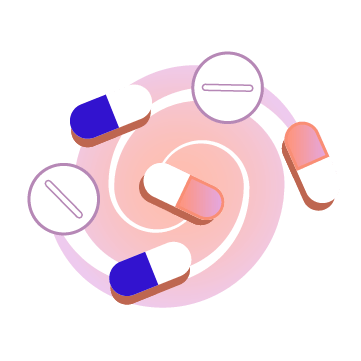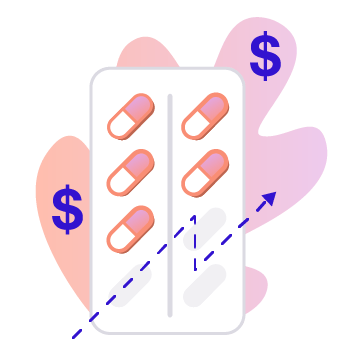A Guide to Donating and Disposing of Unused Medicine

A young man with a MRSA staph infection was facing the consequences of life without health insurance: a bill of more than $40,000 for a 10-day stint in an Iowa hospital to undergo IV antibiotic therapy.
Then, the patient got a donation—not blood or an organ, but a prescription for Zyvox (linezolid), an oral antibiotic treatment for infections that the hospital didn’t have on hand. That prescription replaced his hospital stay and the resulting bill. “The value at the time was approximately $1,800 in donated meds,” said Jon Rosmann, CEO of SafeNetRX. “But through that one donation, we were able to prevent an additional $42,000 in medical costs.”
SafeNetRX is a nonprofit working in tandem with the Iowa State Department of Health to provide uninsured or underinsured patients with access to the medications they need through donations.

“Through that one donation, we were able to prevent an additional $42,000 in medical costs.”

They are part of a growing network of programs like theirs—drug donation repositories that work with manufacturers, pharmacies, long-term health facilities and individuals to connect patients with treatment.
Prescription drugs accounted for almost 17% of personal health spending in 2018, according to health expenditure estimates from the Department of Health and Human Services. And even though it is such a large portion of people’s spending, the United States wastes billions of dollars annually on unused medicines.
About $5 billion in usable prescriptions are thrown out every year.
Nursing homes throw out 740 tons of medicine every year.
The United States discards almost $3 billion in cancer medications each year alone.
Why Is Prescription Drug Waste a Problem?

Medications that are flushed or thrown out hurt the environment.
When prescription and over-the-counter drugs are flushed down the toilet or drain, they can contaminate waterways. A graphic from the EPA on improper medication disposal (PDF, 199 KB) shows how drugs can leach into the ground, seep into groundwater and enter rivers or lakes after passing through a water treatment facility.

Unused prescription drugs are a risk for children, people with substance use disorders and animals.
Prescription drugs left in the home, especially if they aren’t properly stored, are dangerous. The CDC estimates 50,000 young children are sent to the emergency room every year because they get into medicine while adults are not watching. Pets can also ingest drugs that are poisonous to them, such as NSAIDs like Advil.
Unnecessary prescription drugs in the home can increase the risk for substance use disorder, too. In a 2019 study on drug misuse, researchers found nearly one-third of adolescents misusing prescriptions took leftover drugs from their medicine cabinet.

Prescription drug prices in the United States are rising.
The AARP November 2019 Rx Price Watch report (PDF, 90 KB) shows prescription drug prices increased 5.8% in 2018, more than twice as fast as the United States’ general inflation rate of 2.4%.
Specialty drugs, which treat complex, chronic conditions like multiple sclerosis and cancer, are becoming especially pricey. The average annual costs of therapy for widely used drugs in that category: $78,871, according to a September 2019 AARP Rx Price Watch report (PDF, 175 KB).
Those massive costs may not show up at the pharmacy register for patients with insurance, but the experts behind the AARP report say those Americans will likely pay for them via cost-sharing and higher premiums. Not everyone has access to insurance that helps mitigate costs, though.
Adam Kircher is co-founder of SIRUM, a nonprofit that facilitates drug donations. He points out that recent spikes in unemployment will exacerbate these problems. “A lot of people have lost employer-based health insurance,” he said. “With a lot of newly unemployed people trying to figure out how they can pay for their medications, donated medicine is a great [option] for those folks.”
How Can Nurse Practitioners Help Reduce Medication Waste?
As prescribers, nurse practitioners can help mitigate prescription waste at the source. One way is by prescribing short initial fills for patients to help avoid drug abandonment, which is when patients fail to pick up a filled prescription at the pharmacy.
First fills are three times as likely to be abandoned as refills. Additionally, about 70% of patients will abandon prescriptions that cost more than $250 out of pocket.
Many patients also never complete their first fill, deciding to switch to a new prescription because of side effects or undesirable results. That’s why short fills can help prevent waste, optimize the selection of a long-term treatment and save patients money.

About 70% of patients will abandon prescriptions that cost more than $250 out of pocket.

Erika Kimball, RN, a health care sustainability consultant, said prescribers are also key figures in patient education on proper medication disposal methods. “Discussing options for disposing of unused drugs can be a routine part of discharge instructions in the hospital,” Kimball told the American Journal of Nursing in 2015. “And it can be done in the physician’s office as well, when a patient is given a prescription.”
How Donating Unused Medication Can Help
Drug donation services like SafeNetRX and SIRUM represent an option for individuals and organizations that want to help reduce prescription drug waste. These nonprofits receive and manage tons of donations, inspecting and processing each one. Then, they match donations with requests from eligible individual patients or health care facilities.
The Food and Drug Administration’s regulations outline the requirements all charitable institutions must follow for drug donations, including delivery, examination and recordkeeping requirements.
Eligible donors vary by state, but common donors cited by both organizations include pharmacies, drug manufacturers, long-term care facilities and individuals.
And the type of donation varies more than the source. Some are low volume but expensive for consumers. “Far and away the greatest value of donated medicines are anti-cancer medications, oral chemotherapy drugs … the cost of those drugs are so incredibly high,” Rosmann said.
Other drugs are less expensive but still high need, such as hypertension medications, antidepressants, cholesterol-lowering agents and blood modifiers.
Rosmann emphasized that just because a drug isn’t expensive doesn’t mean it is not vital. “For example, we receive large volumes of enoxaparin (a drug used for cardiac procedures),” he said. “Without access to those donated enoxaparin syringes, these patients would not be able to undergo lifesaving cardiac procedures.”
SafeNetRX continues to serve patients in Iowa; they fill between 250 and 350 prescriptions—or about $600,000 worth—a month. And since their founding, SIRUM has facilitated more than $70 million in donated prescriptions.
How to Donate Unused Medicine
Next time you’re cleaning out your medicine cabinet, consider donating any eligible medications. Kircher lists some of the reasons why he thinks it’s the right move.
“You’re not hurting the environment. You’re getting a tax deduction, and you’re helping someone who wouldn’t otherwise be able to afford the medication,” he said. “It’s just a better solution, and it should be the rule rather than the exception.”

Step 1: Determine if the medicine is eligible for donation.
All donated medication must meet the following criteria:
- Is unexpired. Some organizations also require the medicine not expire in the near future.
- Is unopened and in tamper-evident packaging. “Tamper-evident” means the packaging leaves visual evidence once opened (such as a plastic seal). Unit-dose systems, like blister packs, are an example of tamper-evident packaging. Amber vials are not tamper-evident and therefore ineligible for donation.
- Does not require refrigeration. Some medications require cold storage, such as insulins, injections and eye drops. These are not eligible for donation.
- Is not a controlled substance. Controlled substances are drugs that are regulated under federal law and can cause physical and mental dependence. Some examples include opioids like Vicodin and anti-anxiety medications like Xanax. The Drug Enforcement Administration keeps a list of all controlled substances and their schedule (PDF, 503 KB).
For any medications that do not meet one or more of the above requirements, please see the section labeled “How to Dispose of Medication.”
Step 2: Check your state’s regulations on medicine donation
Use the National Conference of State Legislature’s table on state prescription drug recycling laws to see the specific requirements for your state and find out if you are an eligible donor.
If your state does not have a drug repository program, or if individuals are ineligible donors, you still have options. For example, Iowa’s SafeNetRX program accepts out-of-state donations, and SIRUM will match individual donors with participating services in different states, too.
Step 3: Fill out the required forms
Be prepared to include some general information, like your name and contact information, the date of the donation, your signature, etc. You may also need to add details about each medication you are donating.
Step 4: Remove any personal information from the packaging
Cover any personal information on the prescription label, like the patient’s name or the prescription number, using a permanent marker.
Be careful not to cover any information about the medication itself. Pharmacists who review and sort these donations will need to see the drug name, expiration date and dosage.
Step 5: Coordinate shipping or drop-off of the medication
Follow the specific programs instructions to either mail your donation or take it to a designated drop-off site. For example, in Georgia, you must take all donations to a certified pharmacy. Other programs, like the one in Wyoming, ask that in-state donors use a drop-off site and out-of-state donors ship medicine.
How to Dispose of Medication
When medicine is ineligible for donation, there are still steps you can take to ensure safe medication disposal that helps protect others and the environment.
Drug Take Back Locations
In the Food and Drug Administration recommendations for unused medication disposal, the organization recommends taking old, unused, unwanted or expired medications to a drug take back location immediately. Drug take back locations are DEA-authorized collection sites that safely gather and destroy unwanted medicines. Some options to find a medication disposal site near you include:
Drug Enforcement Administration
- Controlled Substance Public Disposal Locations, Drug Enforcement Administration: Search tool that lists all authorized permanent drug take back locations near you.
- National Prescription Drug Take Back Day, Drug Enforcement Administration: Biannual event during which temporary drug take back locations are set up nationwide.
Pharmacies
- Medicine Disposal Locator, Dispose My Meds: Search tool to find independent pharmacies with drug take back services near you.
- Safe Medication Disposal, Walgreens: Some Walgreens locations offer Medication Disposal Kiosks. Use their store locator and filter for the kiosks to find one near you.
- Drug Disposal, CVS: CVS pharmacy locations offer drug take back services. Use their map to find one in your area.
Law Enforcement Departments
- Law enforcement agencies can host collection sites at precincts. Contact your local law enforcement office to inquire about a site in your area.
Safe Medication Disposal in the Household
If a drug take back service is not readily available, do not flush the medicine down the toilet or drain unless it is one of the few drugs on the FDA’s Flush List. These are substances that are especially harmful and could be fatal in a single dose.
For all substances not on the flush list, follow these steps based on EPA and FDA recommendations to dispose of them via your household trash:
- Empty the bottle or container of all medicine.
- Thoroughly mix the pills or tablets with an undesirable substance, such as cat litter or used coffee grounds.
- Place the mixture in a disposable container.
- Scratch off or cover all personal information on the medicine bottle with a permanent marker.
- Dispose of the container holding the mixture and the empty bottle in your household trash.
Disclaimer: The requirements to donation medication vary by state. Make sure to reach out to the relevant organization before donating to ensure you comply with local and state regulations.

